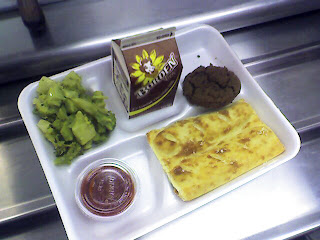
There used to be a running gag on TV where a poor sap and his date would get stuck in the worst table in the restaurant--the one next to the kitchen, with all the noise and the banging and the waiters coming in and out and dropping things on their heads.
Times have changed. Now that table is the best seat in the house. At some places you even have to pay a premium for sitting there. It's called the "chef's table."
Some of the local restaurants that now have chef's tables include McCrady's, Slightly North of Broad, Cru Cafe, Oak Steakhouse, A Culinary Art Company, and the Dining Room at Woodlands (where a seat at the chef's table will run you a cool 175 bucks). At most of these, the service is special at the chef's table, featuring the chef himself presenting the dishes, and the fare is sometimes special, too. Out at Woodlands, for instance, your $175 buys a twelve-course "Ulimate Tasting Menu."
I ate at a Charleston restaurant the other day where I was given the choice at the reception stand to have a regular table or a seat at the chef's table. I was dining alone and thought,
what the heck, let's see what it's like.
It was a lot like sitting at that proverbial table next to the kitchen. It was loud. It was bustling, with all the traffic coming in and out from the open kitchen's service area. And, due to the proximity to the stoves and grill, it was rather, um . . . intensely aromatic. The menu was the same as the one for the regular dining area (fortunately, the prices were too), and while I could see the upper torsos and heads of the crew as they worked their stations, the food was served by the same waitresses who were working the floor.
In short, I failed to see the point.
I suppose a seat at the chef's table is a fascinating experience for someone who has never worked in a restaurant and seen the other side of the house. I sort of enjoyed my meal there, but just for the nostalgia, taking me back to my own restaurant days in my early 20s. It was still early on a weeknight, so the kitchen didn't have that mad roiling energy of movement and emotions that you get, say, at eight o'clock on a Friday evening. But, you still had the rhythm of "order in" and "food's up" and "86 grouper" that took me back to the old days.
I suppose the phenomenon of the chef's table reflects the rise of chefs as celebrities in their own rights, with personality and fame often eclipsing the food itself as the star of the show. The openness of today's restaurant kitchens moves what used to be the backhouse secrets of food production to the front and center. There's probably something healthy in this interest in watching chefs cook--it shows, perhaps, that restaurant partrons are growing more interested in how their food is prepared and are valuing good food more. But, I'm not sure how much I would like working in such a place.
Back in the day, when you passed from dining room to kitchen, you went from a dark, gently-buzzing world of elegance through a swinging door into a blindingly-bright white-tile-and- stainless-steel inferno of chaos and anger. It was steamy and hot and everyone was sweating. Open hostility was the order of the day, especially between the line cooks and the waiters, who became the proxies of the idiot customers out front who wanted to sub one item for another or had the gall to send back a steak that wasn't cooked to their liking. The pressure of the incoming tickets and the constant dodging and jostling of too many people in too small a space kept tempers at a constant simmer, and every fifteen minutes or so a manager would burst in to throw some kerosene on the blaze with a well-timed burst of profanity and abuse.
You don't get that dynamic at restaurants with the open kitchens, for the sous chefs and line cooks and servers are now on stage and have to at least partially behave themselves. Part of me wonders if the open kitchen isn't just a decor and marketing thing but also a sneaky management tool.
While the kitchen activity was pretty dull from my vantage point at the chef's table, I got to eavesdrop on the conversation of the waiters and waitresses as they paused to wait for an order to come up or their next table to be sat. There were two main topics: the crazy shit that happened last night when they were all out boozing it up, and where they would go tonight to booze it up again once their shift was over. Sprinkled, of course, with plenty of gossip about who was hooking up with whom and who was mad at whom and how their car just broke down and how broke they were. And I remembered why after a year or so of the restaurant life I had started applying to grad schools.
My dinner at the chef's table was a nice walk down memory lane, but the next time I'm given the choice, I'll stick with the two-top by the front window.














